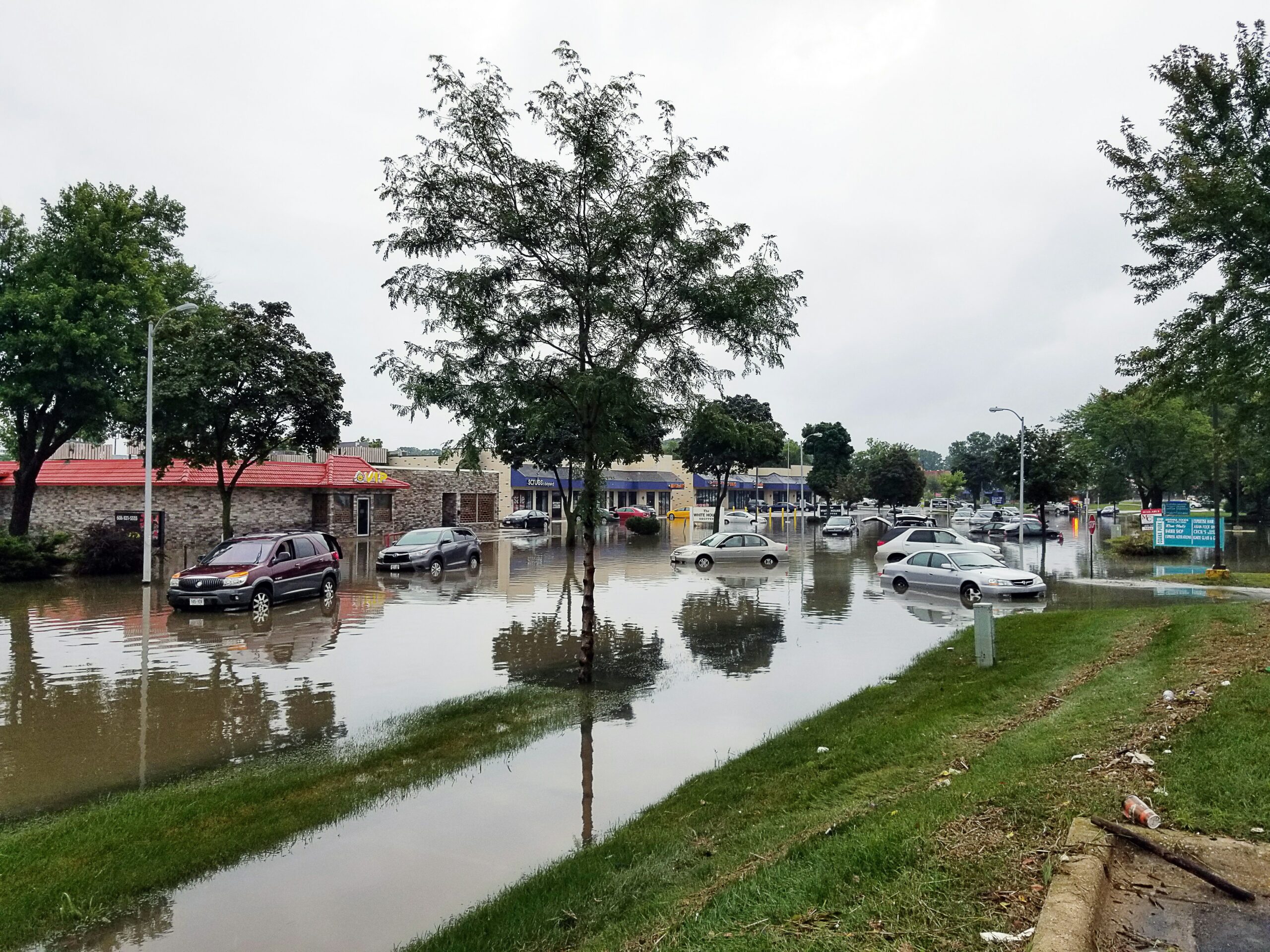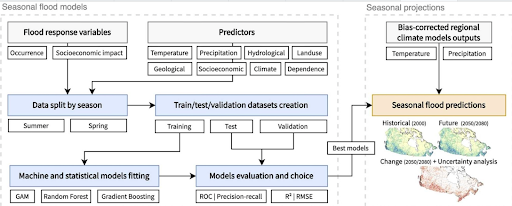Author: Miranda Jacques
Date: June 25, 2025

Article Title:
Projected seasonal flooding in Canada under climate change with statistical and machine learning
Article Affiliation:
Department of Mathematics, Université du Québec à Montréal, Montréal, QC, Canada
Climatic Hazards and Advanced Risk Modelling, QC, Canada
Centre Eau Terre Environnement, QC, Canada
Article Citation:
Grenier, M., Boudreault, J., Raymond, S., & Boudreault, M. (2024). Projected seasonal flooding in Canada under climate change with statistical and machine learning. Journal of Hydrology: Regional Studies, 53, 101754.
INTRODUCTION
Flooding is one of the most devastating natural disasters globally, with its frequency and severity exacerbated by climate change. As global temperatures rise, the hydrological cycle intensifies, leading to more extreme precipitation events and, consequently, more frequent and severe floods. This research focuses on the relationship between climate change and hydrology, particularly examining how changing climate patterns influence seasonal flood risks. Understanding these dynamics is essential for mitigating the impact of floods, especially in regions like Canada, where diverse landscapes and weather patterns make flood prediction and management increasingly complex and critical.
The research aimed to explore the impact of climate change on seasonal flood risks across Canada, with a focus on understanding how different types of flooding, driven by varying seasonal dynamics, will evolve. This topic is crucial as flooding is one of the most significant natural hazards, both in terms of financial damage and human mortality, and its frequency and severity are expected to increase due to climate change. The research fills a critical gap in existing studies, which have often been limited to specific watersheds or have lacked comprehensive national-scale assessments. By developing data-driven flood models that account for seasonal variations, the study seeks to provide a more detailed understanding of the potential future risks and socioeconomic impacts of flooding in Canada. The hypothesis is that these models will offer a more nuanced view of how seasonal climate change will affect flood dynamics across the country, thus informing better strategic decision-making and public policy planning. This work builds on previous research by expanding the scope to a national level and integrating both hydrological and socioeconomic factors into the analysis.
RESULTS AND DISCUSSION
The study applied statistical and machine learning approaches (Generalized Additive Model, Random Forest, and Gradient Boosting Machine), to model the occurrence and impact of seasonal flooding in Canada under climate change scenarios. The results indicated that RF outperformed GAM and GBM on the test dataset but showed signs of overfitting on the validation dataset. GAM emerged as a more reliable model on the validation dataset due to its ability to generalize better and extrapolate to new data. Consequently, GAM was selected for further analysis of future flood projections.
The study found that summer flooding is expected to increase in probability and impact by 2050, particularly in southwestern British Columbia, the southern Prairies, and the Atlantic provinces. By 2080, these trends are expected to intensify. In contrast, spring flooding showed a more mixed pattern, with slight increases in some regions and decreases in others, particularly in the Prairies.
One of the study’s strengths is its innovative use of machine learning models alongside climate data to predict seasonal flooding, providing a better understanding of how climate change could affect different regions of Canada. The study also highlights the importance of treating seasonal floods separately due to the different hydrological processes that influence them.

For Atlantic Canadians, this study is particularly crucial as it helps regional authorities and communities better prepare for the anticipated rise in flood events. The research underscores the importance of adopting data-driven approaches for more effective flood risk management and highlights the need for ongoing development and validation of these methodologies. By improving flood predictions, this work contributes to safeguarding communities, infrastructure, and ecosystems from the escalating threats posed by climate change.
CONCLUSION
In conclusion, this study demonstrates that GAM is the most effective tool for predicting seasonal flood occurrences and impacts across Canada, particularly under future climate change scenarios. The research highlights an expected increase in summer flooding, while spring floods show mixed results depending on the region. The findings underscore the importance of adopting advanced, data-driven methodologies for flood risk management, offering valuable insights for policymakers and communities to better prepare for the challenges posed by climate change. This work reinforces the need for ongoing development and refinement of these predictive approaches to enhance their accuracy and utility in safeguarding the public.
